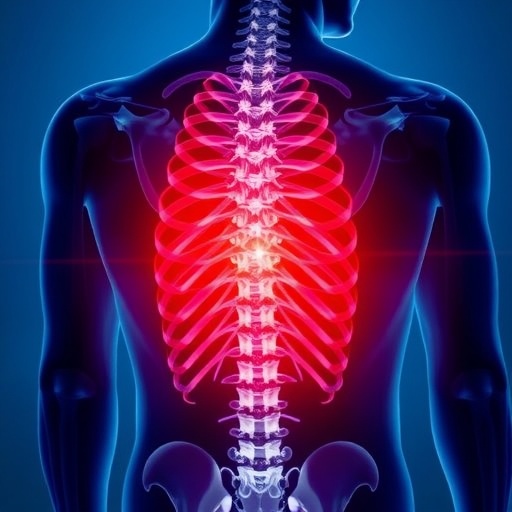The article titled “Lumbar puncture seems to be safe and practical in oldest-old patients” emerging from a protocol established at a memory center provides insightful advancements in medical practices focusing on one of the most vulnerable age demographics: the oldest-old patients, generally characterized as those aged 85 and above. With advancements in medical technology and improved understanding of geriatric conditions, the misconception surrounding the safety of lumbar punctures in such an aged population is being challenged.
Historically, lumbar puncture, or spinal tap, has been perceived as a procedure associated with various risks, especially in older patients. The concerns are not unfounded; elderly individuals often present with multiple comorbid conditions, which can complicate diagnostic procedures. However, recent studies and practices have begun to debunk the myth that lumbar punctures are inherently dangerous for this age group. Researchers are increasingly advocating for the procedure as both safe and practical, indicating a shift in medical thinking towards better management of age-related neurological disorders.
The memory center’s recent protocol reinforces that lumbar puncture can be performed with proper precautions and in meticulously selected patients. This research aligns with the growing notion that proactive measures in diagnosing cognitive impairments can indeed enhance clinical outcomes for these patients. In fact, the early diagnosis of neurological conditions such as Alzheimer’s disease through procedures like lumbar punctures could lead to timely interventions that significantly improve quality of life.
The study encompasses a diverse range of factors when evaluating the safety of lumbar punctures among oldest-old patients. Special consideration is given not only to the patients’ physical health status but also to aspects like mental acuity and the motivation for undergoing the procedure. Patients who understand the benefits and risks involved are more likely to consent positively to potentially life-improving diagnostic measures.
Moreover, trained personnel and equipped facilities play a pivotal role in ensuring patient safety during lumbar punctures. The memory center protocol emphasizes rigorous training for healthcare professionals in geriatric care, as well as the necessity for a comfortable, supportive environment during the procedure. By examining patient responses and procedural outcomes, the research aims to systematically address common fears surrounding lumbar punctures.
The results of this protocol reveal encouraging data regarding complication rates associated with lumbar punctures in elderly patients. Initial findings suggest that when conducted in a controlled, supportive setting, the risk of complications such as post-puncture headaches, infections, or bleeding is markedly low. This is a significant revelation, demonstrating that with proper protocols, the benefits of conducting lumbar punctures outweigh their risks.
As part of their research, the authors highlight case studies showing how these procedures led to the accurate diagnosis of conditions that may have otherwise gone unchecked. Tackling the issues of misdiagnosis and delayed treatment in geriatric patients can lead to better management of diseases affecting cognition. Indeed, this proactive approach not only aids in diagnosis but also establishes clearer pathways for patient care and management.
Furthermore, the study delves into the psychological implications of receiving a diagnosis through lumbar puncture. Many patients and families grapple with the fear of cognitive decline, and understanding the underlying conditions opens avenues for support and treatment. Knowledge empowers patients and healthcare providers alike, reinforcing the importance of thorough diagnostic processes in elder care.
The research underscores the collaborative role that family members and caregivers play in these scenarios. Their support can significantly influence the decision-making process for patients facing lumbar punctures. Emotional backing and informed discussions about the risks and rewards can demystify the procedure and alleviate some apprehensions associated with it.
In conclusion, as medical research continues to unveil the benefits of lumbar punctures for diagnosing cognitive ailments among the oldest-old, practitioners are encouraged to reconsider long-held biases against the procedure. With evidence pointing toward its safety and practicality, there’s hope for improved diagnostic and care strategies within geriatric medicine. The pathway forward involves integrating such practices into routine care for the elderly, evolving the landscape of how cognitive conditions are treated and managed.
Thus, the continuing dialogue surrounding lumbar puncture in the elderly is more than just clinical; it signifies a broader movement towards compassion in healthcare where age should not limit access to necessary medical interventions. The research carried out by Ontan and colleagues sets the groundwork for ongoing considerations of how we perceive aging and the medical care afforded to one of society’s most vulnerable groups.
Subject of Research: Safety and practicality of lumbar puncture in oldest-old patients.
Article Title: Lumbar puncture seems to be safe and practical in oldest-old patients: a protocol from a memory center.
Article References: Ontan, M.S., Dost, F.S., Kaya, D. et al. Lumbar puncture seems to be safe and practical ın oldest-old patients: a protocol from a memory center. Eur Geriatr Med (2025). https://doi.org/10.1007/s41999-025-01361-2
Image Credits: AI Generated
DOI: 20 November 2025
Keywords: lumbar puncture, oldest-old patients, geriatric care, cognitive disorders, medical safety
Tags: advancements in elder healthcareage-related neurological disorders managementcognitive impairment diagnosis in seniorscomorbid conditions in elderlygeriatric medical proceduresimproving clinical outcomes in elderly carelumbar puncture safety in elderly patientsmemory center protocols for lumbar puncturemisconceptions about lumbar puncture in older adultsoldest-old patient carepractical lumbar puncture techniquesspinal tap risks and benefits





